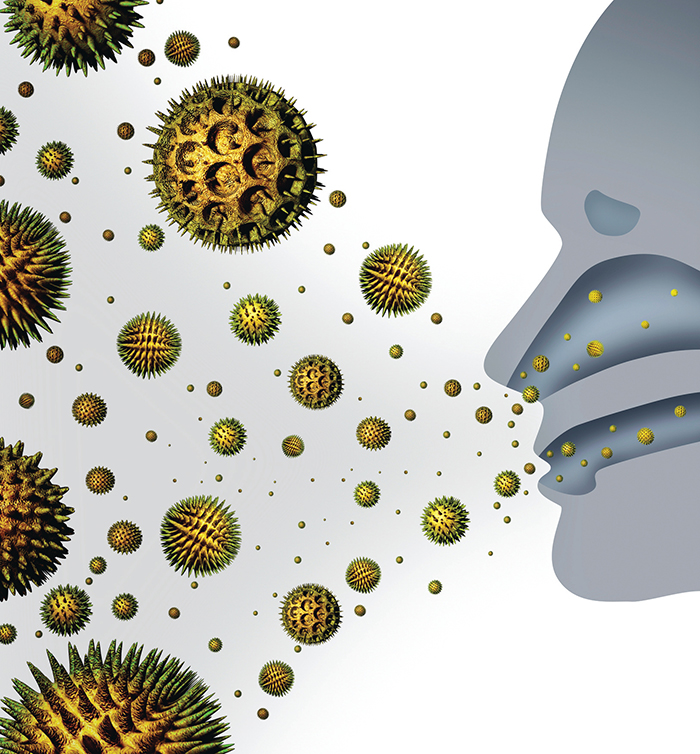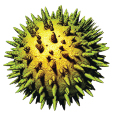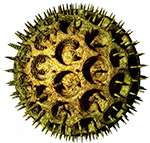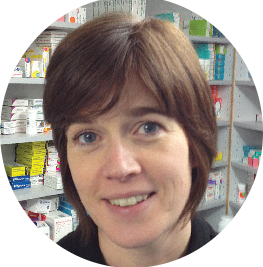Community pharmacy and the hayfever season
In Seasonal
Follow this topic
Bookmark
Record learning outcomes
Work on your allergy fixture to make it easier for customers to find what they need during the hayfever season and to ask for advice from the pharmacy team.

The hayfever season is now under way, with millions of people expected to experience sore itchy eyes, sneezing attacks and nasal congestion as pollen levels rise. Hayfever is the most common allergy in the UK and one of the biggest pharmacy categories. And while it’s important that pharmacies prepare in advance for the uplift in stock, it’s always difficult to predict when the season will hit or how severe it will be. Each year, tree pollen forecasts are issued in late spring and grass pollen forecasts are issued from late May to August.
People’s experience of hayfever symptoms can vary from year to year, which can make it difficult for customers to know which products to use, even those who have experienced symptoms before. So how can pharmacists make sure they’re tailoring the treatment to their customers’ needs? Cathy Crossthwaite, Numark’s marketing co-ordinator, says pharmacies should offer a varied range of allergy remedies in multiple formats.
“First-time sufferers often have to use trial and error to find a remedy that works well for them, so having multiple options available allows customers to continue returning to trial a variety of products,” she says. “Advice relating to the different remedies from the pharmacist will also help the customer determine the best treatment forthem. The hayfever season can be a frustrating time for sufferers, so quality advice from a trusted professional will be greatly appreciated.”
Tailoring treatments
 According to Holly Shaw, nurse advisor at Allergy UK, pharmacists need to adopt a holistic approach, as one medicine doesn’t suit all needs. “Tailoring the medicine to alleviate the individual’s allergy symptoms, with patient preferences, will encourage user compliance and symptom relief,” she says. “The age of the patient, route of administration and price of the products are all important factors to consider. Antihistamines come in a variety of products including tablets, oral solutions, eye drops and nasal sprays.”
According to Holly Shaw, nurse advisor at Allergy UK, pharmacists need to adopt a holistic approach, as one medicine doesn’t suit all needs. “Tailoring the medicine to alleviate the individual’s allergy symptoms, with patient preferences, will encourage user compliance and symptom relief,” she says. “The age of the patient, route of administration and price of the products are all important factors to consider. Antihistamines come in a variety of products including tablets, oral solutions, eye drops and nasal sprays.”
“Where symptoms persist or aren’t controlled by antihistamines alone, additional products in the form of nasal sprays may be beneficial in symptom control. It’s important for patients to understand how to use their nasal spray to maximise its effectiveness. Combination nasal preparations, including steroid and antihistamines are available. Nasal sprays may assist with the relief of eye symptoms, such as redness, swelling and itching.”
Bea Warner, brand manager at Omega Pharma, says pharmacists need to establish which stage of the allergic reaction the individual is at when they ask for advice. “Someone who has only recently been exposed to an allergen, and is potentially not even presenting with symptoms yet, could be recommended an allergen barrier treatment such as Prevalin Allergy,” she suggests.
“But someone in the early-phase response, with an itchy or runny nose and/or sneezing, has the option of using an antihistamine tablet or allergen barrier or, for further relief, both together. New for 2016 is Prevalin Allergy Plus, which acts as an allergen barrier and mast cell stabiliser. Once a person has reached the inflammation stage and is complaining of irritation and congestion, they could be better suited to a nasal corticosteroid such as Beconase. Knowing all this will ensure customers get the best possible remedy to meet their needs.”
Hospital admissions ‘rise 16 per cent during high pollen season’
High levels of pollen have been linked with risk of cardiac arrest, according to a study published in the American Journal of Epidemiology.
Researchers in Canada studied thousands of cardiac emergencies and found they peaked on days of high pollen counts. “Our findings suggest airborne pollen might represent a previously unidentified risk factor for heart attacks,” said the report.
When pollen levels peaked in May and June heart attacks rose by 16 per cent and 10 per cent respectively. “This might be particularly relevant for patients with existing cardiovascular disease who also have a known pollen allergy. But this needs further investigation,” said researchers.
Simplify the allergy fixture
 According to Linda Bradley, area category marketing director, respiratory, northern Europe at GlaxoSmithKline, the allergy fixture can be very confusing for allergy sufferers and is best simplified where possible. “People shop according to brand and ingredient, so it’s important to improve visibility and highlight the allergy section within the pharmacy,” she says.
According to Linda Bradley, area category marketing director, respiratory, northern Europe at GlaxoSmithKline, the allergy fixture can be very confusing for allergy sufferers and is best simplified where possible. “People shop according to brand and ingredient, so it’s important to improve visibility and highlight the allergy section within the pharmacy,” she says.
“It’s important that pharmacists can offer appropriate support and advice on format and ingredients and communicate the difference between various products and brands. A lot of allergy sufferers are dissatisfied with their allergy treatment, because it isn’t relieving their symptoms, so pharmacists need to be able to recommend other suitable products. With Pirinase switching from P to GSL for the 2016 season, it’s even more important that pharmacists provide advice and support, as customers won’t get this from supermarkets.”
Offer value for money
The hayfever season lasts for several weeks or even months, which means it can be an expensive time for customers, especially if they need several products daily to control their symptoms. Ms Crossthwaite says it’s still important for pharmacies to stock the leading brands available on both P and GSL with an own-label alternative, too, for those who want it.
“Offering an own-label alternative offers a cheaper option for the customer,” she says. “Stock larger and smaller packs. New sufferers who are still using the trial-and-error method will want smaller packs until they establish an appropriate treatment, whereas long-term sufferers will want larger packs of the treatment that they know works for them.”
“Customers are often already suffering when searching the allergy/hayfever category and could be feeling miserable, so will expect to find the category quickly with minimal hassle. Using beacon brands at the start of the shelf and clear category signage helps the customer to locate the category.”
Encourage link sales
 Hayfever management involves more than just taking suitable medicines, and pharmacists are ideally placed to offer tips on pollen avoidance and self-help measures. Ms Crossthwaite suggests stocking a “hayfever in the home” range for customers. “Include key household cleansing items such as Dettol anti-bacterial spray, dust-catching cloths, etc,” she says.
Hayfever management involves more than just taking suitable medicines, and pharmacists are ideally placed to offer tips on pollen avoidance and self-help measures. Ms Crossthwaite suggests stocking a “hayfever in the home” range for customers. “Include key household cleansing items such as Dettol anti-bacterial spray, dust-catching cloths, etc,” she says.
“Along with this, offer conventional advice about cleaning the home regularly to avoid the spread of pollen within the home.” Hayfever is also a key time to encourage link sales, and Ms Bradley agrees that pharmacies need to think beyond the usual hayfever products. “Locate tissues and other products close to the hayfever section for impulse purchasing, for example,” she says.
Offer a drug-free range
If customers don’t want to take conventional medicines every day, they may be looking at non-drug approaches, such as Sterimar saline nasal sprays, HayMax allergen barrier balms or Nelson’s Pollenna. This year, HayMax has launched new HayMax kids, with eye-catching packaging that will appeal to younger age groups.
Jennifer Sun, UK training and business development manager for the Puressential range, including an essential oil-based purifying air spray, adds: “Consumers are looking for the best, most effective and safest products, which they can use to help them effectively improve their hayfever symptoms. Furthermore, natural hayfever-relief products have the benefit of having fewer contraindications and rebound effects than conventional products on the market.”
People shop according to brand and ingredient, so it’s important to improve visibility and highlight the allergy section within the pharmacy
Comment
 Nemesh Patel, Day Lewis Pharmacy, Chelmsford “Our pharmacy stocks a full category of allergy-relief products and recent trends have shown that many people buy early in preparation for the hayfever season. All our team members are well trained, with a focus on identifying the right product that suits the patient’s needs and giving the best advice on how to use it correctly, to ensure customers experience fast relief. Prevention is better than cure when it comes to managing allergies, so I suggest spending time discussing methods to alleviate symptoms. I also like to stock a value alternative to brands, both on open display and behind the counter. This has proved to provide repeat business for our pharmacy along with the opportunity to link sell items, such as tissues and decongestants.”
Nemesh Patel, Day Lewis Pharmacy, Chelmsford “Our pharmacy stocks a full category of allergy-relief products and recent trends have shown that many people buy early in preparation for the hayfever season. All our team members are well trained, with a focus on identifying the right product that suits the patient’s needs and giving the best advice on how to use it correctly, to ensure customers experience fast relief. Prevention is better than cure when it comes to managing allergies, so I suggest spending time discussing methods to alleviate symptoms. I also like to stock a value alternative to brands, both on open display and behind the counter. This has proved to provide repeat business for our pharmacy along with the opportunity to link sell items, such as tissues and decongestants.”
 Fiona McElrea, Whithorn Pharmacy, Whithorn “This category is extremely important for our pharmacy – with demand for products all year round nowadays. As we move into spring we change the layout of the pharmacy shelving, to put hayfever products at eye level, where the cold and flu remedies are positioned over the winter. We restock at this time of year and tend to take this opportunity to order in bulk so that we aren’t forced to reorder often throughout the summer. We can prescribe quite a lot of hayfever products on the minor ailments scheme, so that can be very handy for people. Having the correct range of products with alternatives is the most crucial thing for this category.”
Fiona McElrea, Whithorn Pharmacy, Whithorn “This category is extremely important for our pharmacy – with demand for products all year round nowadays. As we move into spring we change the layout of the pharmacy shelving, to put hayfever products at eye level, where the cold and flu remedies are positioned over the winter. We restock at this time of year and tend to take this opportunity to order in bulk so that we aren’t forced to reorder often throughout the summer. We can prescribe quite a lot of hayfever products on the minor ailments scheme, so that can be very handy for people. Having the correct range of products with alternatives is the most crucial thing for this category.”
 Shaheen Bhatia, P&S Chemist, Ilford “It’s very important for us. In our area we have a minor ailments service and this is one of the conditions for which we have most use out of the service. It’s most popular around exam time when people want things straightaway and they don’t necessarily want to go to their doctor. We do try to move the products around when it comes into season with all the GSL ones at eye level so they’re easy for people to see and near the medical counter so that people can ask for advice if they need to. There’s a lot of national marketing around the branded products in the category, so we do tend to sell a lot of those. People say, “I saw this – what do you think?” and they do take our advice on board and listen to what we say. Hayfever is certainly be a category that we should be very confident in when recommending products.”
Shaheen Bhatia, P&S Chemist, Ilford “It’s very important for us. In our area we have a minor ailments service and this is one of the conditions for which we have most use out of the service. It’s most popular around exam time when people want things straightaway and they don’t necessarily want to go to their doctor. We do try to move the products around when it comes into season with all the GSL ones at eye level so they’re easy for people to see and near the medical counter so that people can ask for advice if they need to. There’s a lot of national marketing around the branded products in the category, so we do tend to sell a lot of those. People say, “I saw this – what do you think?” and they do take our advice on board and listen to what we say. Hayfever is certainly be a category that we should be very confident in when recommending products.”
